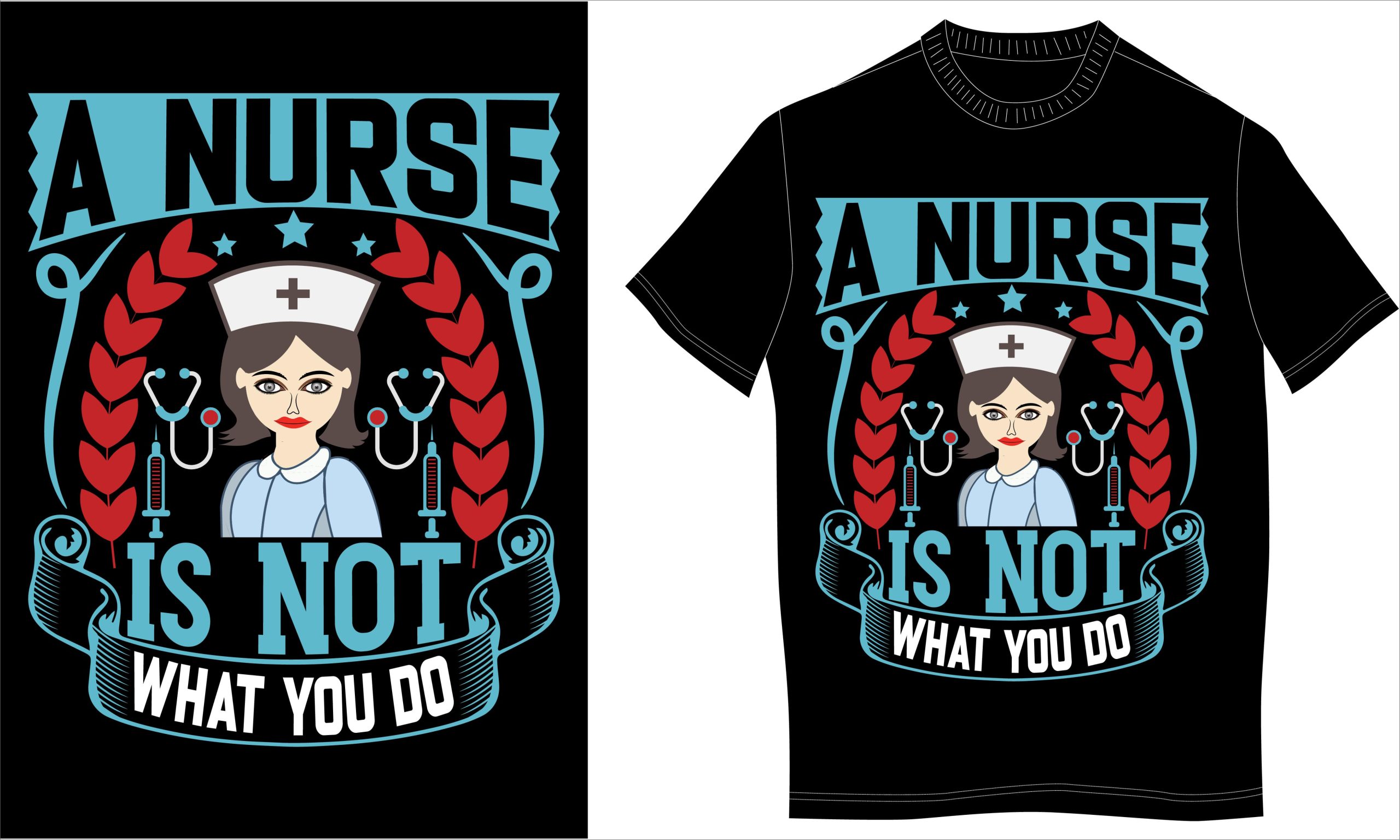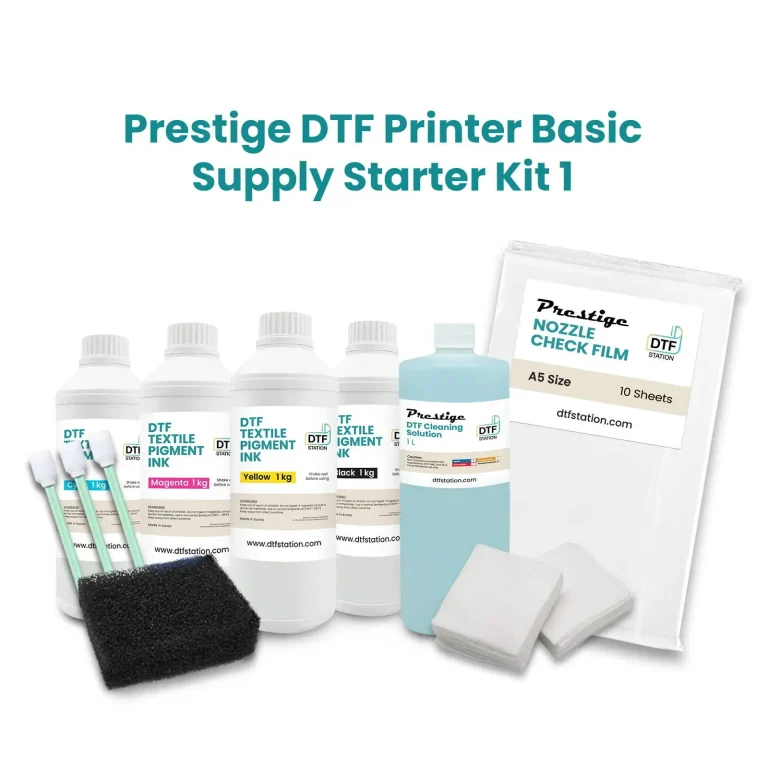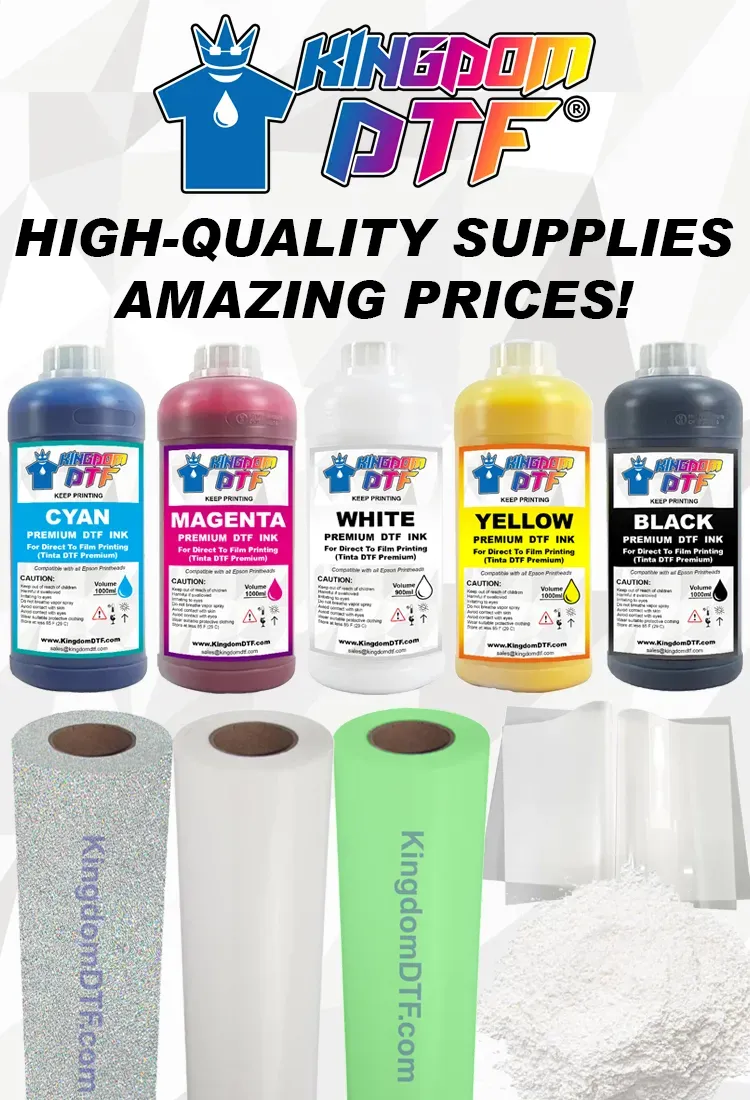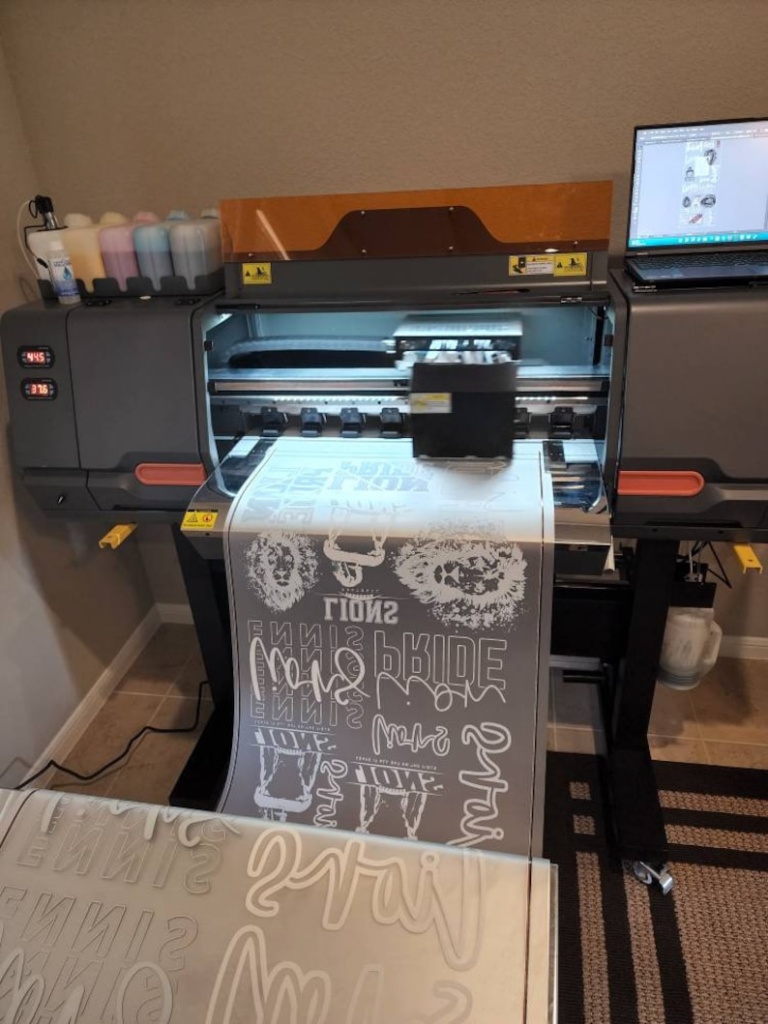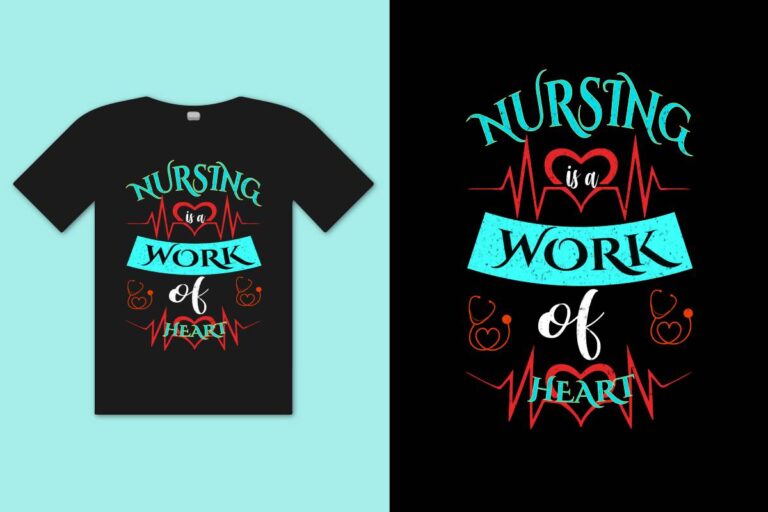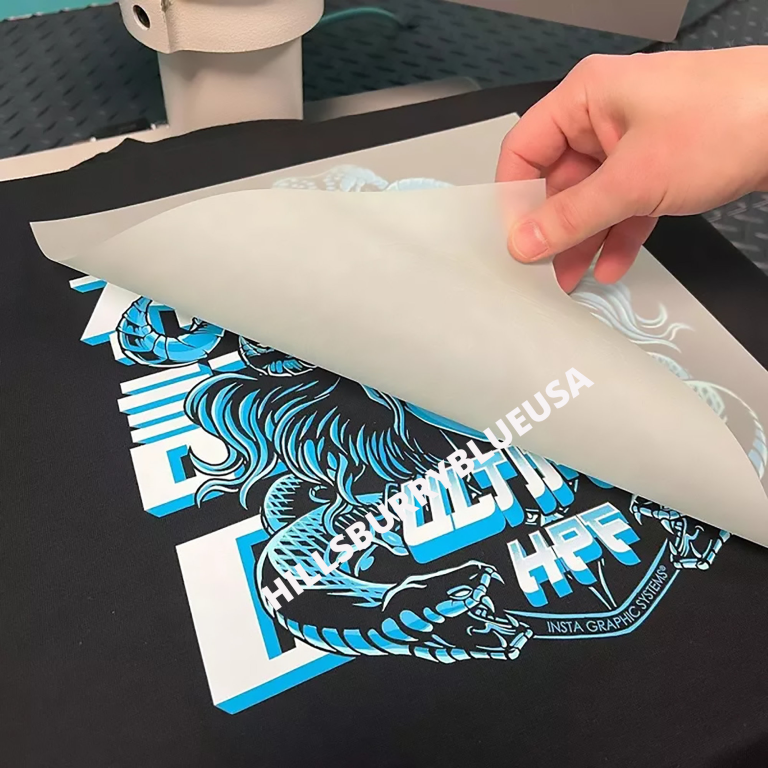DTF Supplies: Ensure Exceptional Print Quality Today
DTF Supplies are essential for anyone aiming to achieve exceptional print quality in the world of fabric printing. With the rise of DTF printing, which utilizes advanced technology and high-quality materials, creating vibrant and durable designs has never been easier. This innovative process involves printing designs on a special DTF film and then transferring them onto fabrics using a heat press, allowing for a wide variety of applications. When selecting DTF supplies, it’s critical to look for high-quality inks, reliable adhesive powders, and the best DTF printers available, as each element plays a significant role in the final product. In this guide, we’ll delve into how to choose the right DTF supplies to ensure your prints stand out, meeting both aesthetic and functional needs.
In the realm of fabric printing, the term “Direct to Film” (DTF) represents a groundbreaking approach that has transformed how designs are transferred onto textiles. By leveraging highly specialized materials, including various films and potent adhesive powders, this method facilitates the creation of stunning and resilient prints suitable for an array of fabrics. Whether you’re focused on custom apparel or unique promotional items, understanding the nuances of DTF technology and its required components is crucial. This exploration will illuminate the best practices for selecting the ideal supplies, such as superior inks and printers, to elevate your printing projects. Embrace the world of DTF to unlock vibrant designs that are both visually striking and remarkably durable.
Choosing the Right DTF Film for Optimal Results
Selecting the correct DTF film is a critical factor in achieving vibrant and long-lasting prints. High-quality DTF films made from PET (Polyethylene Terephthalate) ensure that ink adheres well and transfers smoothly onto fabric. The thickness of the film also plays an important role, as a range between 75 and 100 microns offers flexibility and durability during the printing process. By investing in well-reviewed films from leading suppliers like Transfer Paper HQ, you set the foundation for exceptional overall print quality.
Moreover, different types of DTF films are suitable for different applications. For instance, matte films provide a subtle finish ideal for fashion apparel, while glossy films enhance color vibrancy and are perfect for promotional items. Conducting tests with various film types allows you to choose the right one that complements your design and material, ensuring the final product meets or exceeds client expectations.
Essential Inks for DTF Printing Success
The choice of ink can make or break your DTF printing experience, as it directly impacts color vibrancy and durability. High-quality water-based inks typically yield the best results, providing a wide color gamut that is crucial for detailed designs. Leading brands such as INKPOT and DTF Tech are known for their top-notch formulations that deliver bright colors while ensuring compatibility with your DTF printer. Investing in premium inks not only enhances print quality but also contributes to the longevity of your printed garments.
Furthermore, it’s essential to consider the pigment concentration in the inks, as this factor influences opacity and saturation. Inks with high pigment density render richer colors that resist fading even after multiple washes. Regularly assessing the performance of your chosen inks through test prints can help you maintain color integrity and clarity in your final products.
The Role of DTF Adhesive Powder in Print Quality
DTF adhesive powder is a pivotal component in the DTF printing process, as it binds the ink to the fabric post-transfer. Selecting the right adhesive powder can significantly affect the final product’s softness and durability. Fine particle powders are recommended because they blend seamlessly with the printed ink, ensuring a smooth application that doesn’t interfere with fabric texture. Reviews and trials with different brands can guide you towards reliable options that enhance your overall print quality.
Moreover, experimenting with different adhesive powders can yield varying results, from increased wash resistance to changes in feel. Some users may prefer softer finishes for fashion items, while others might prioritize durability for promotional merchandise. Knowing your target market and understanding the characteristics of various adhesive powders will allow you to tailor your approach to suit customer needs.
Ensuring Printer Compatibility for DTF Success
Understanding printer compatibility is a fundamental aspect of successful DTF printing. Not every printer is equipped to handle DTF inks effectively; therefore, choosing the right machine is crucial. Eco-solvent printers or specific inkjet models that accommodate water-based inks are often recommended to achieve optimal results. Regular maintenance of your printer, including cleaning and calibration, is vital to maintaining print quality and prolonging the life span of your equipment.
Additionally, staying updated with the latest printer technologies and trends empowers you to make informed decisions when upgrading your equipment. Research communities and forums can provide valuable insights from other users regarding the best models compatible with DTF printing, helping you avoid potential pitfalls and ensuring your setup is perfectly aligned for high-quality output.
Conducting Effective Quality Control in DTF Printing
Quality control is an indispensable step in the DTF printing process, helping ensure that every print meets high standards. Conducting test prints not only allows for assessment of color accuracy and opacity, but also evaluates how different DTF supplies interact with various fabric types. This proactive approach enables you to identify issues early, ensuring that your final products are durable and visually appealing.
Furthermore, regularly calibrating your printer contributes significantly to consistent print quality over time. Implement quality control measures such as maintaining ink levels, cleaning printer heads, and consistently monitoring results from different substrates. Emphasizing quality at every stage of production not only enhances the final output but also fosters trust and satisfaction among your clientele.
Tips for Selecting Reliable DTF Suppliers
Choosing the right suppliers for your DTF materials plays a crucial role in the outcome of your printing projects. Researching vendor reviews and feedback is essential to ensure that you source high-quality DTF supplies. Suppliers like Colman and Kimshining are recognized for their reliability in the industry, but exploring user experiences can help unearth hidden gems that cater to your specific needs.
Engaging with the DTF printing community through forums and social media can also provide insights into suppliers that others have successfully utilized. This connection offers invaluable tips and recommendations that can guide your purchasing decisions, ultimately leading to an improved quality of your print work and a stronger business reputation.
Frequently Asked Questions
What types of DTF supplies are essential for successful DTF printing?
To achieve successful DTF printing, essential supplies include high-quality DTF film, water-based inks, DTF adhesive powder, and a compatible printer. Each of these components contributes to the durability, vibrancy, and overall quality of your final prints.
How do I choose the best DTF film for printing?
When selecting a DTF film, opt for high-quality PET films with a thickness between 75 to 100 microns. These films facilitate optimal ink adhesion and smooth transfers, which are critical for achieving vibrant and durable designs.
What is the importance of using high-quality inks in DTF printing?
Using high-quality inks in DTF printing is crucial as they ensure vibrant colors and excellent detail in your prints. Water-based inks with high pigment concentrations provide a wider color gamut and better overall print quality.
How can DTF adhesive powder affect my printing results?
DTF adhesive powder plays a vital role in bonding ink to fabric. Choosing fine particle powders improves durability and softness of the final product, ensuring that prints withstand multiple washes without fading or cracking.
What should I consider for printer compatibility when using DTF supplies?
When using DTF supplies, it’s important to ensure your printer supports DTF inks, particularly eco-solvent printers or specific inkjet models that accommodate water-based inks. Regular maintenance of your printer is also essential to maintain print quality.
Why is vendor selection important for DTF printing materials?
Selecting reliable vendors for your DTF supplies ensures high-quality materials that can significantly impact your print results. Researching supplier reviews and engaging with the DTF community can help you find trusted sources and avoid potential pitfalls.
| Key Point | Details |
|---|---|
| Introduction | Choosing the best DTF supplies is crucial for exceptional print quality, especially for fabric printing. |
| Understanding DTF Technology | DTF printing uses water-based inks on a special film, offering durability and versatility across many fabrics. |
| Benefits of DTF Printing | 1. Vibrant Colors 2. Versatility for different fabrics 3. Durable prints that withstand washings |
| Types of Supplies Required | 1. DTF Film: High-quality PET films recommended. 2. Inks: Water-based with high pigment concentrations. 3. Adhesive Powder: Fine particles for good adhesion. 4. Printer Compatibility: Ensure printer supports DTF inks. |
| Quality Control | Conduct test prints for assessing color accuracy and adherence. Regular maintenance is vital for consistent quality. |
| Vendor Selection | Choose reliable suppliers like Colman and Kimshining based on reviews and user feedback. |
| Recent Trends | Growing popularity of eco-friendly inks and films catering to environmentally conscious consumers. |
Summary
DTF Supplies are integral for anyone looking to achieve top-tier print quality in fabric printing. The selection of high-quality components such as inks, films, adhesive powders, and printers is essential in producing vibrant and durable prints on different textiles. By conducting thorough research, engaging with the DTF community, and regularly testing materials, individuals and businesses can elevate their printing capabilities. Additionally, staying abreast of recent trends, including eco-friendly options, not only ensures adherence to current market demands but also aligns with sustainability initiatives. With the right supplies and techniques, achieving impressive, professional results in DTF printing is within reach.

